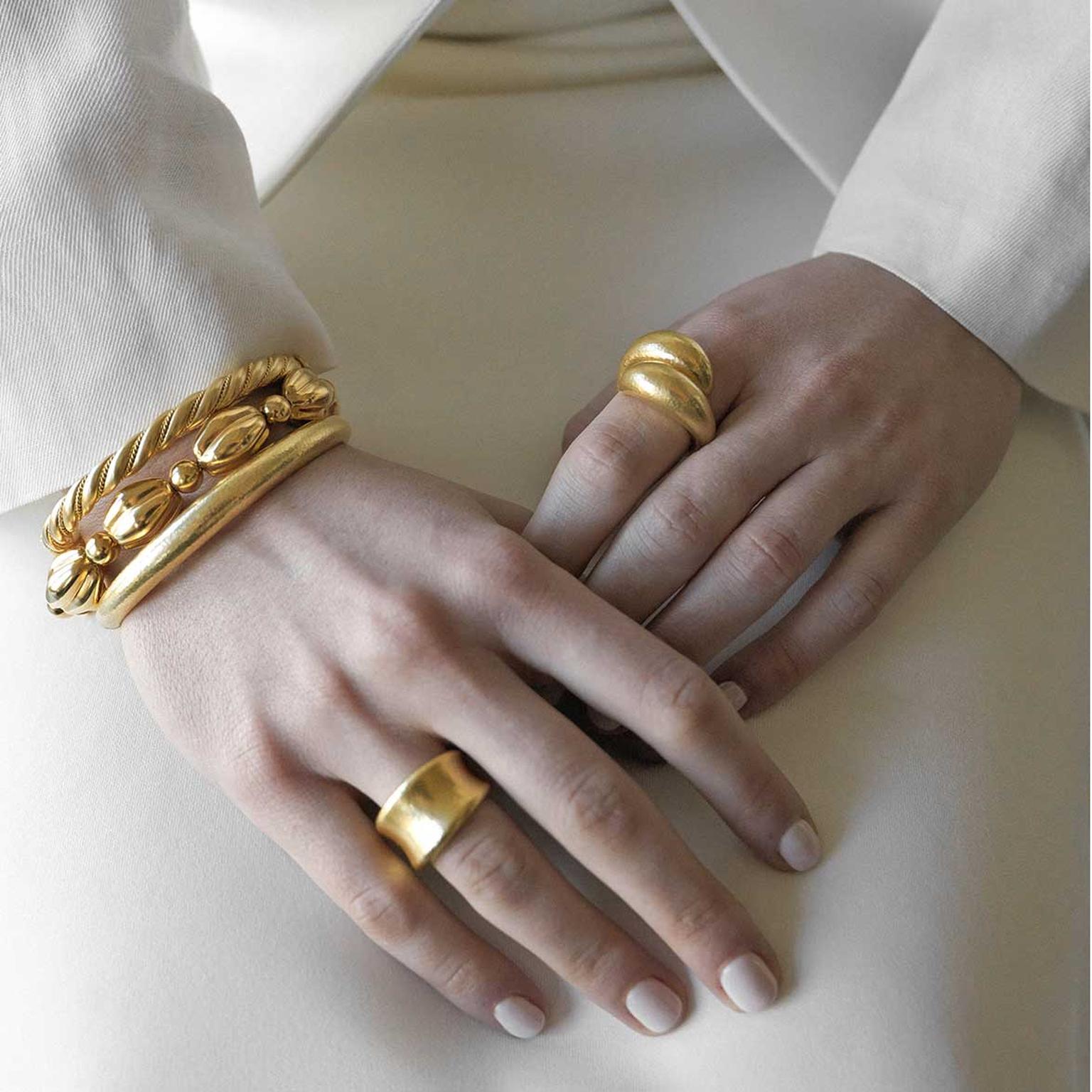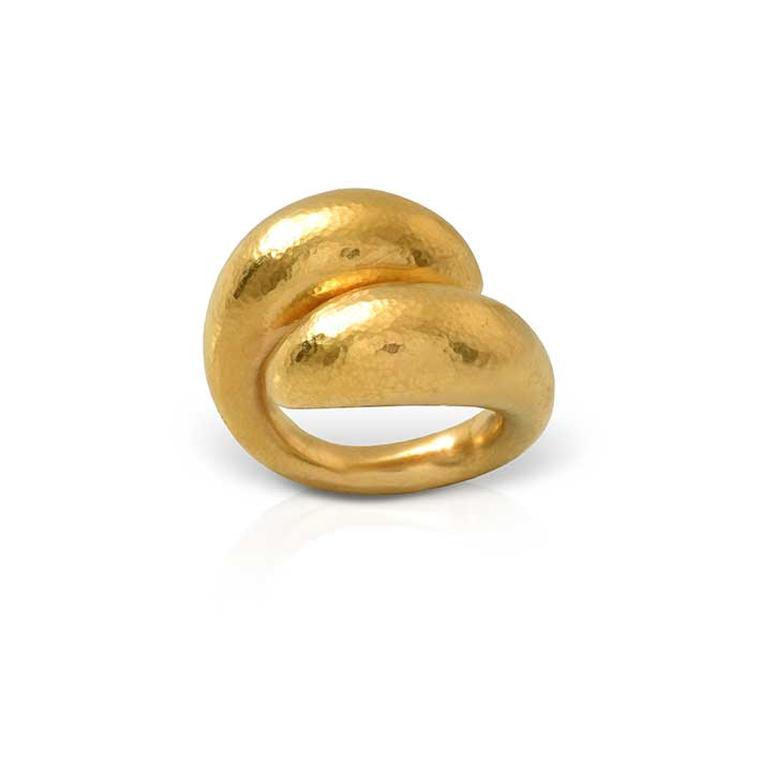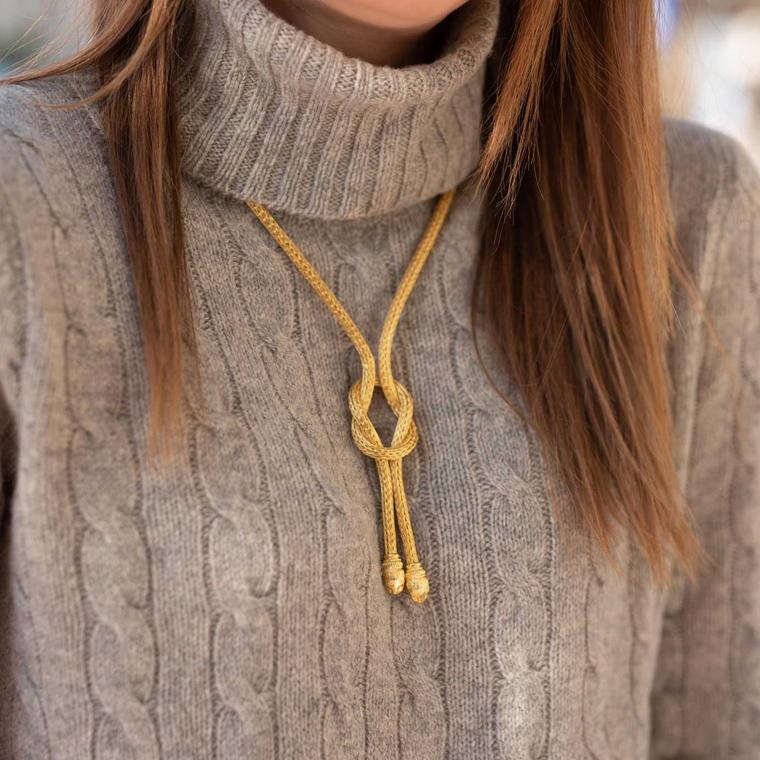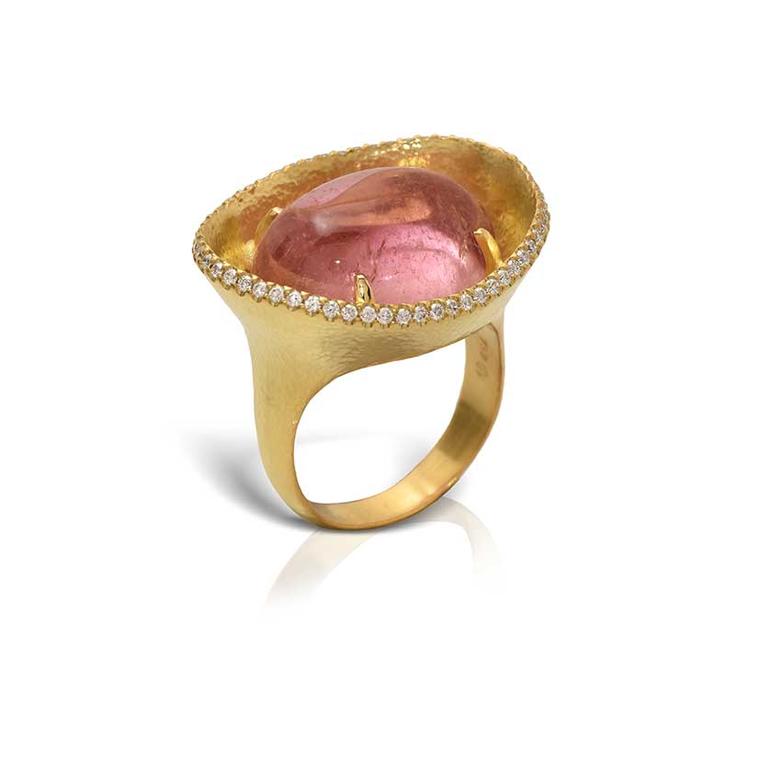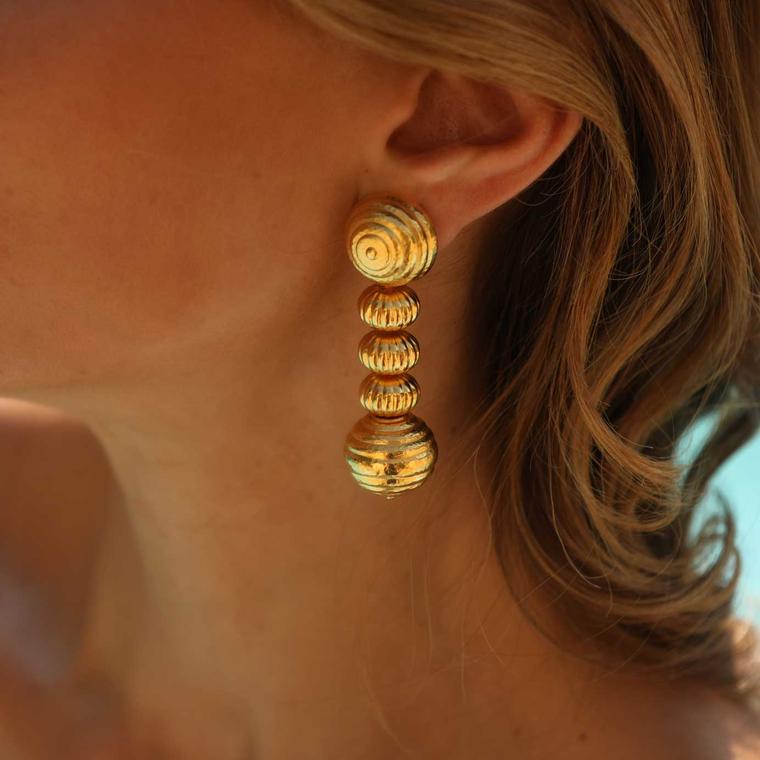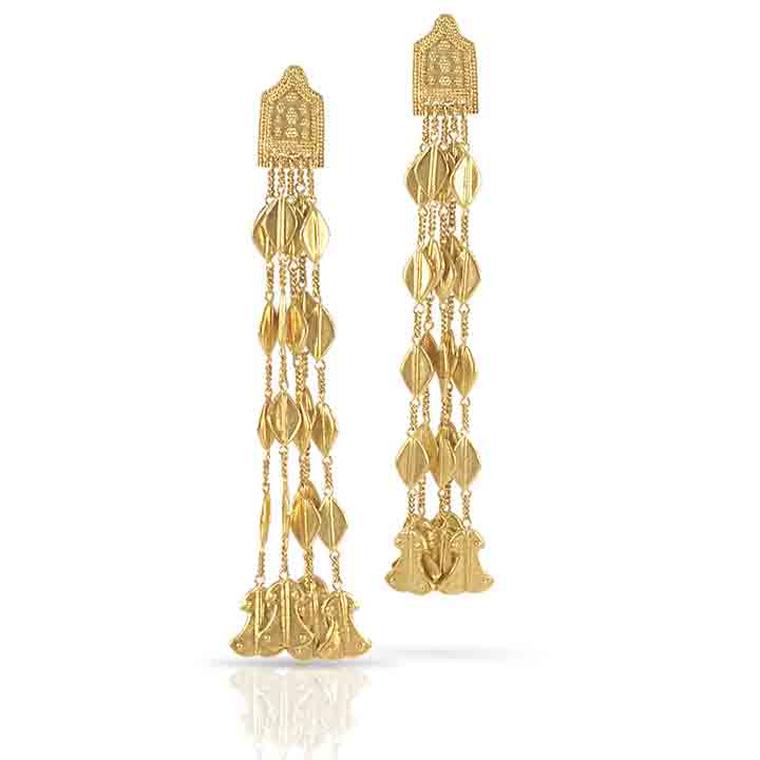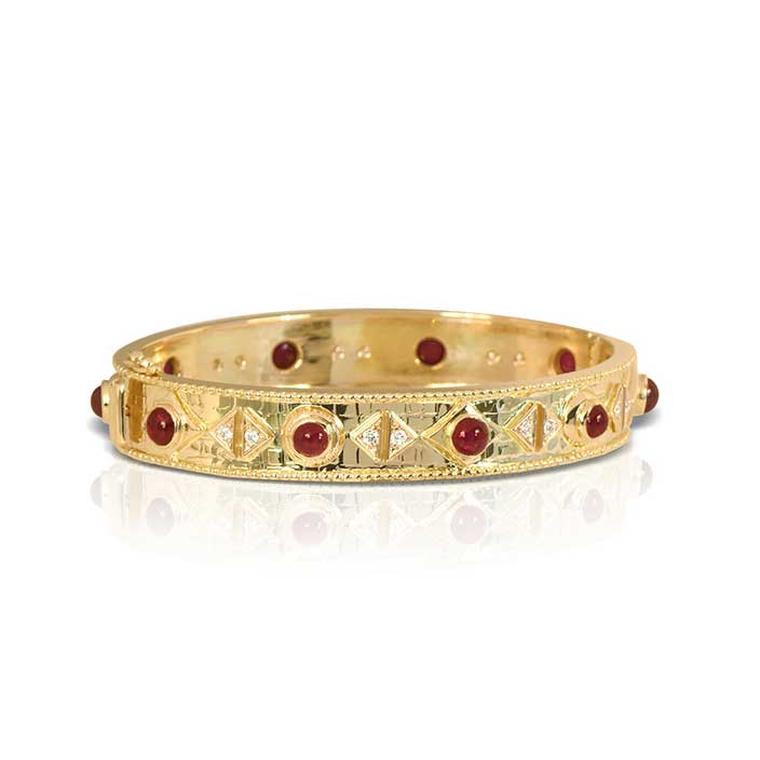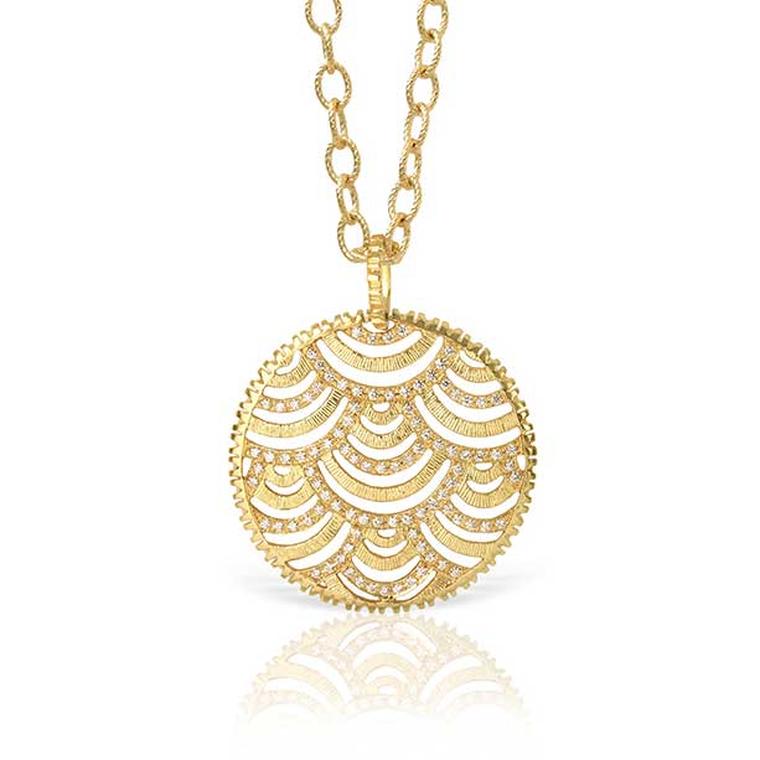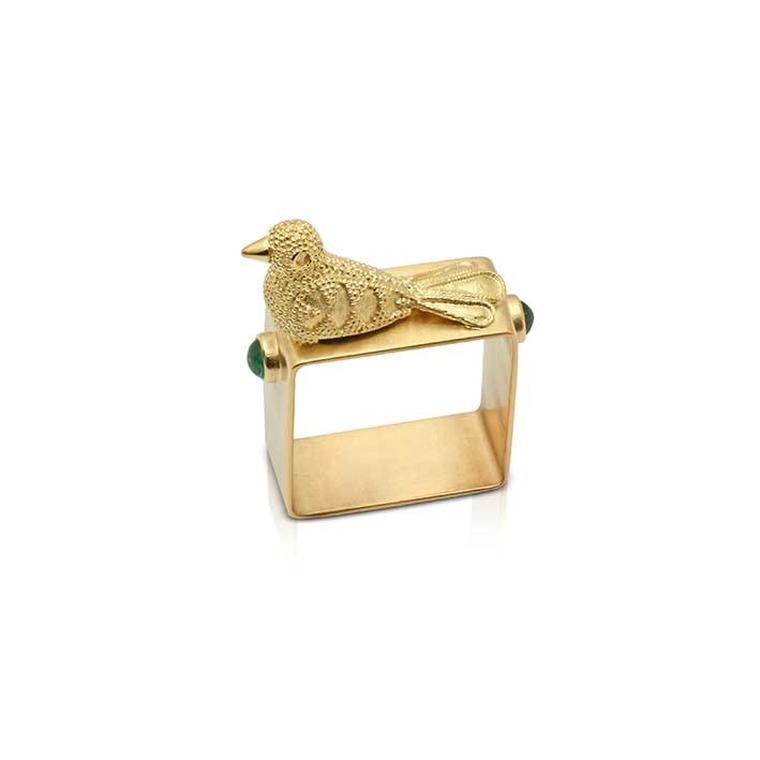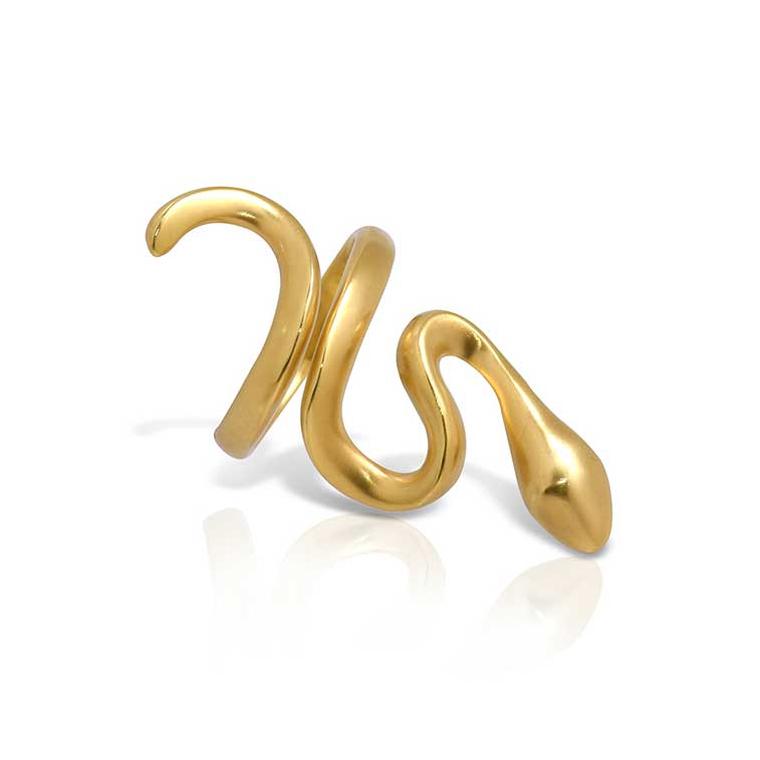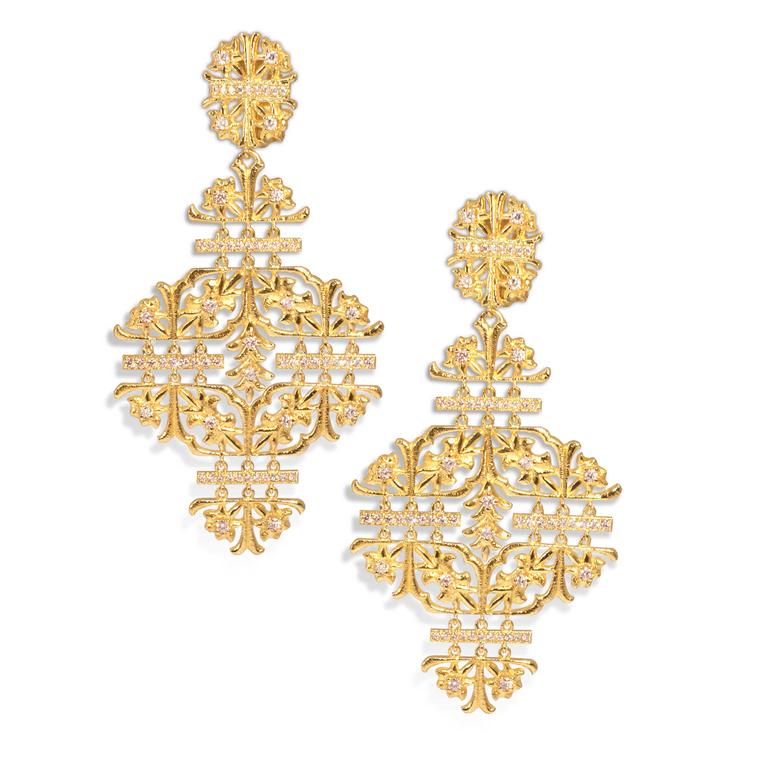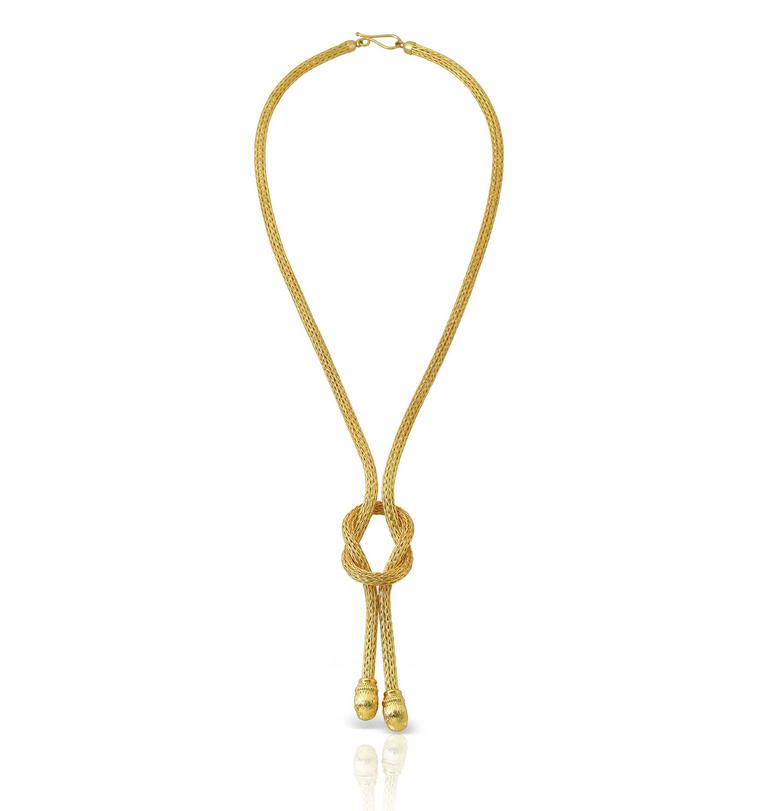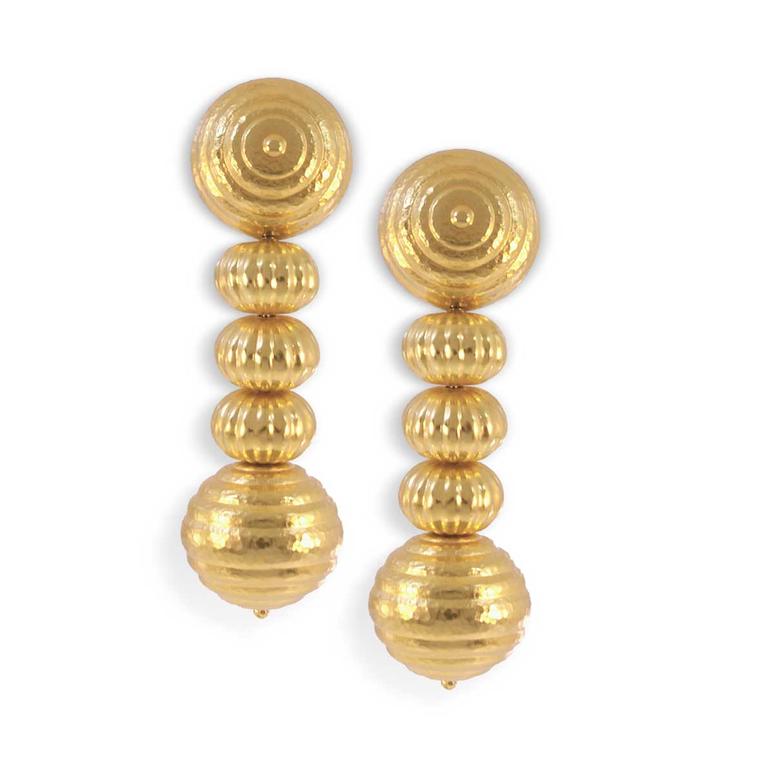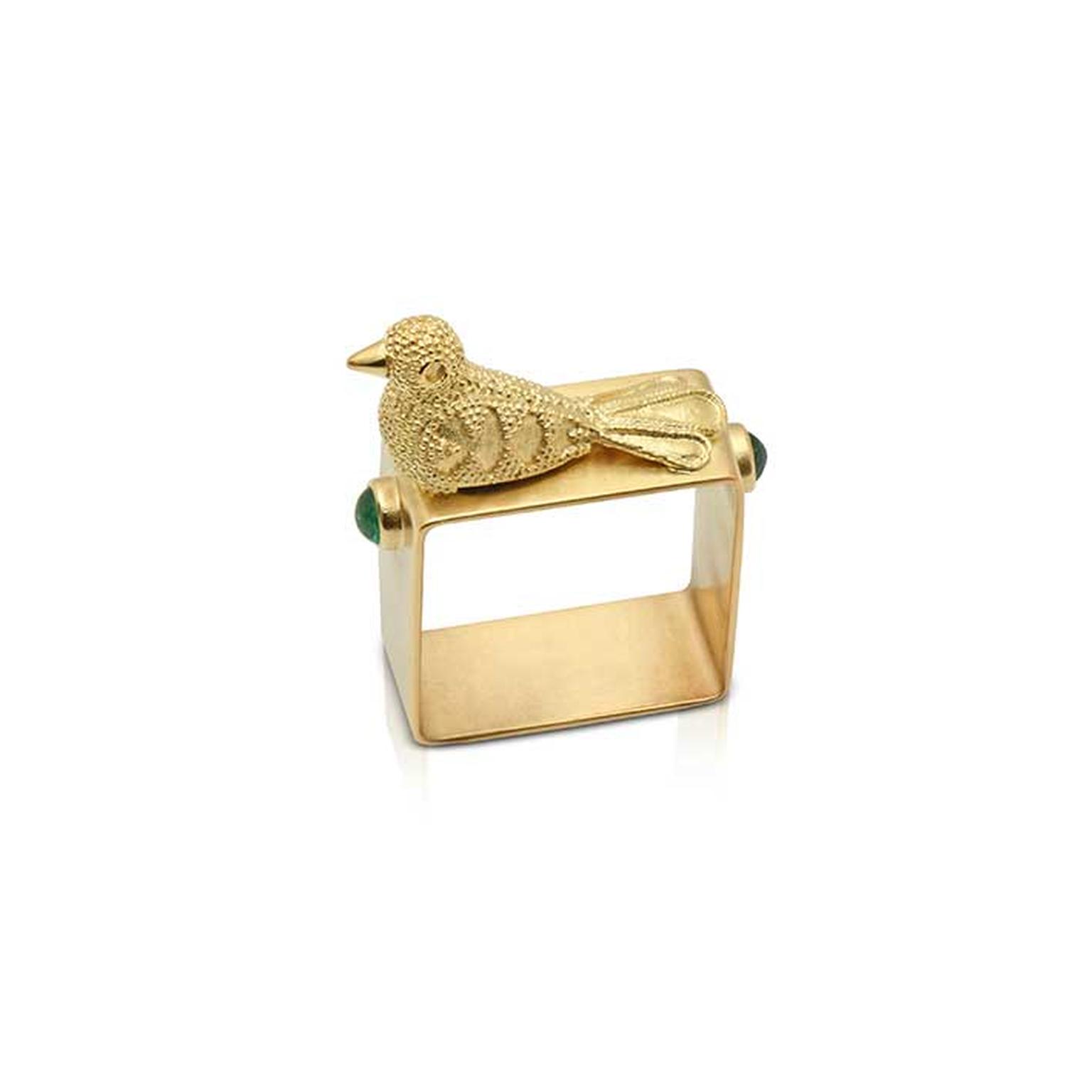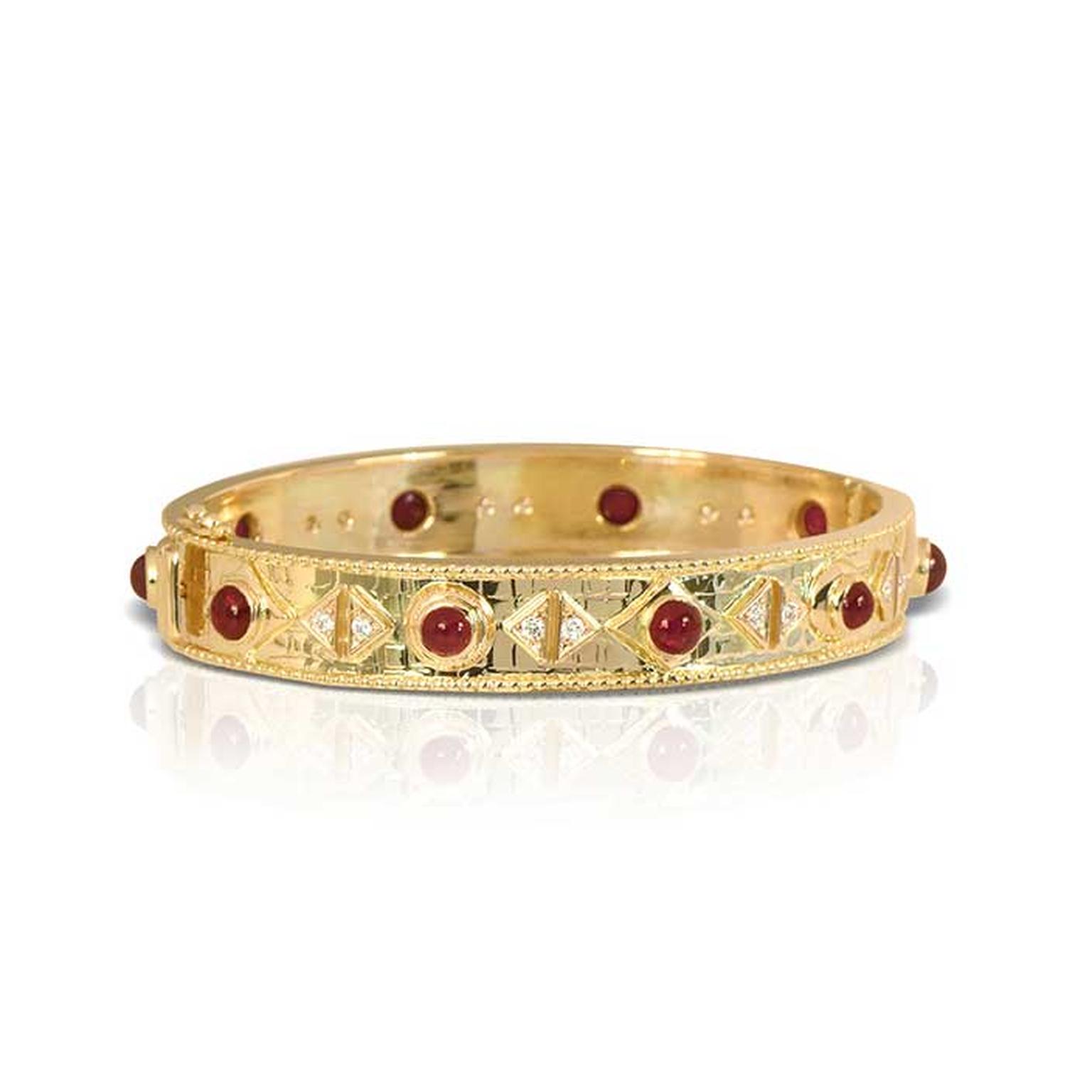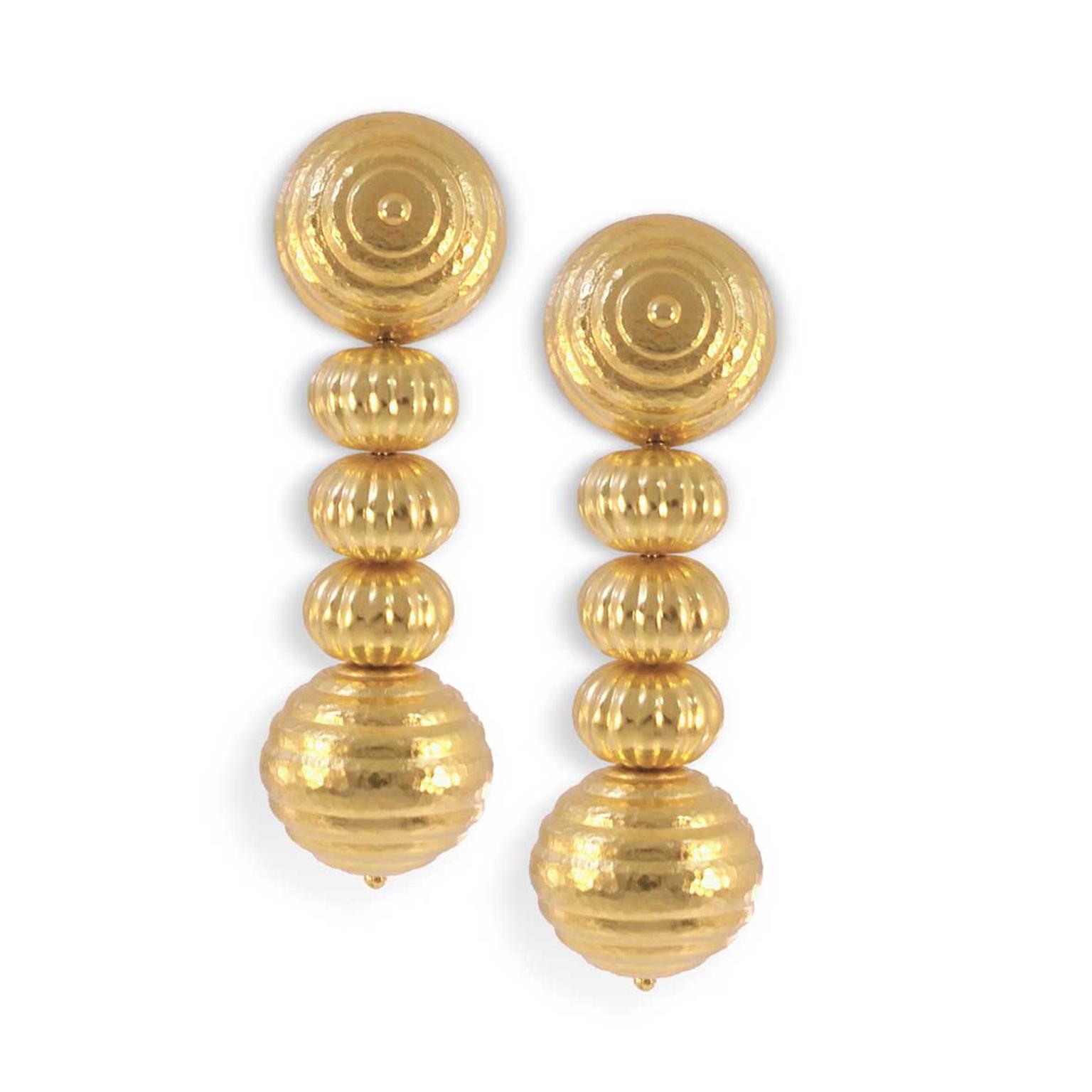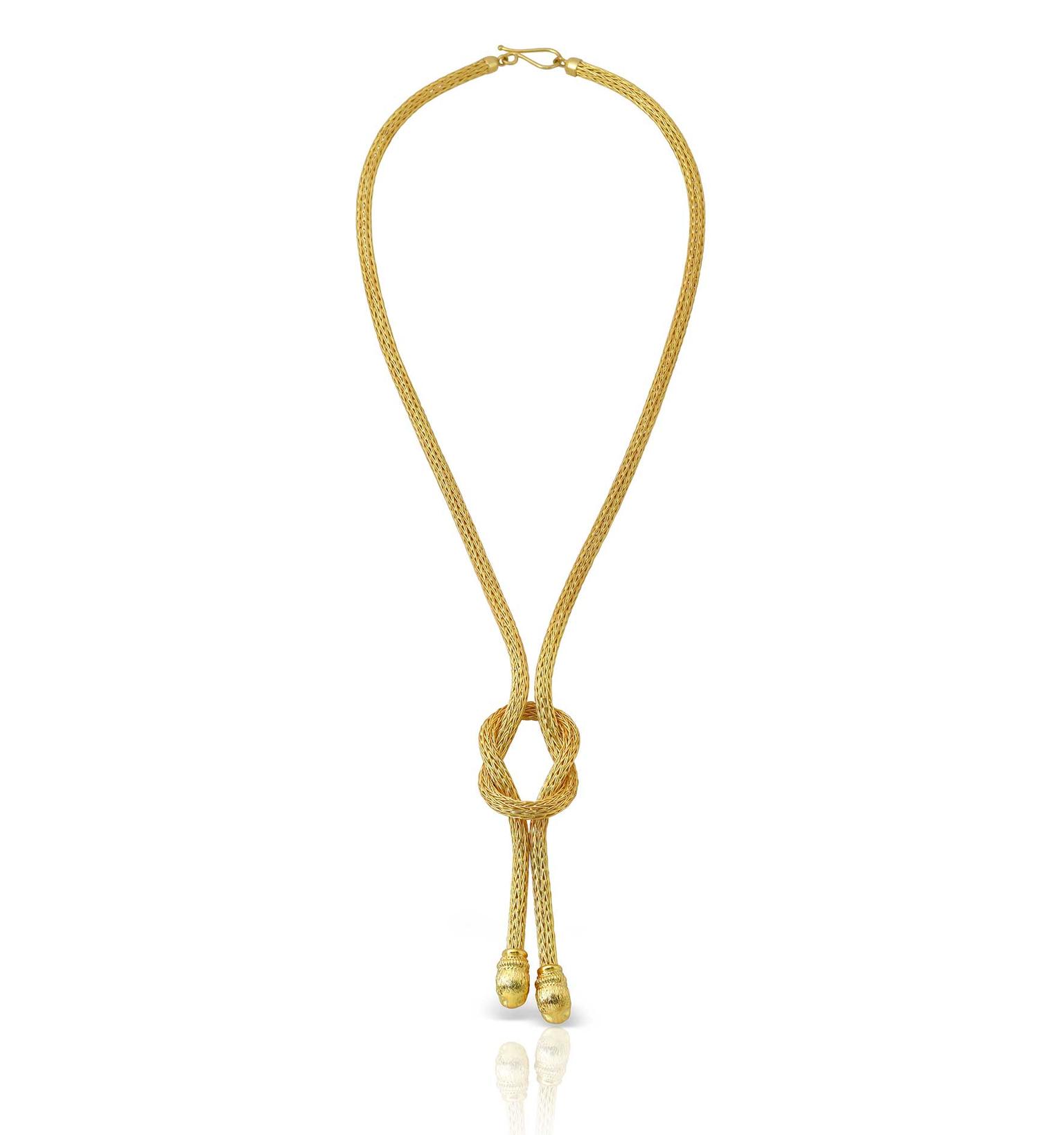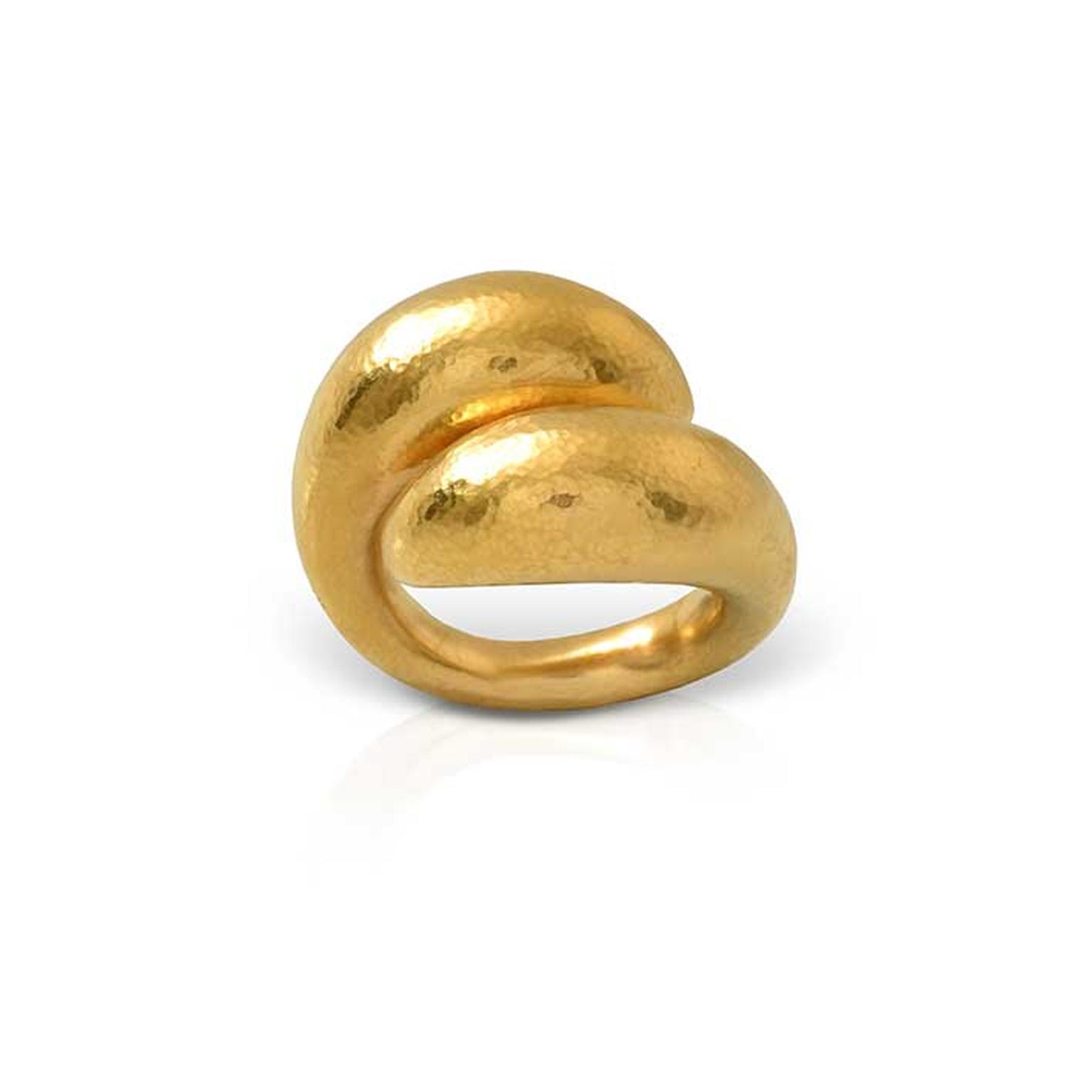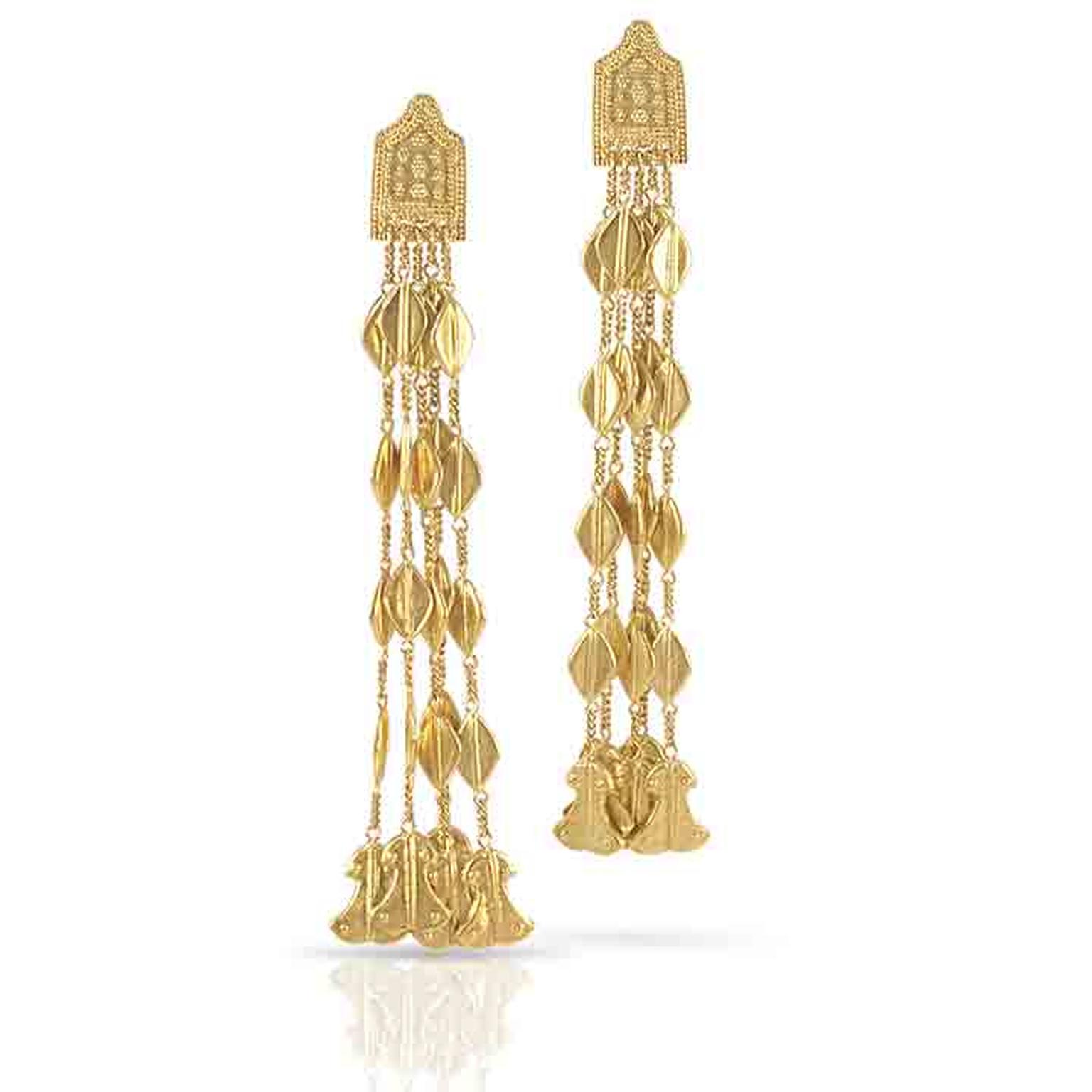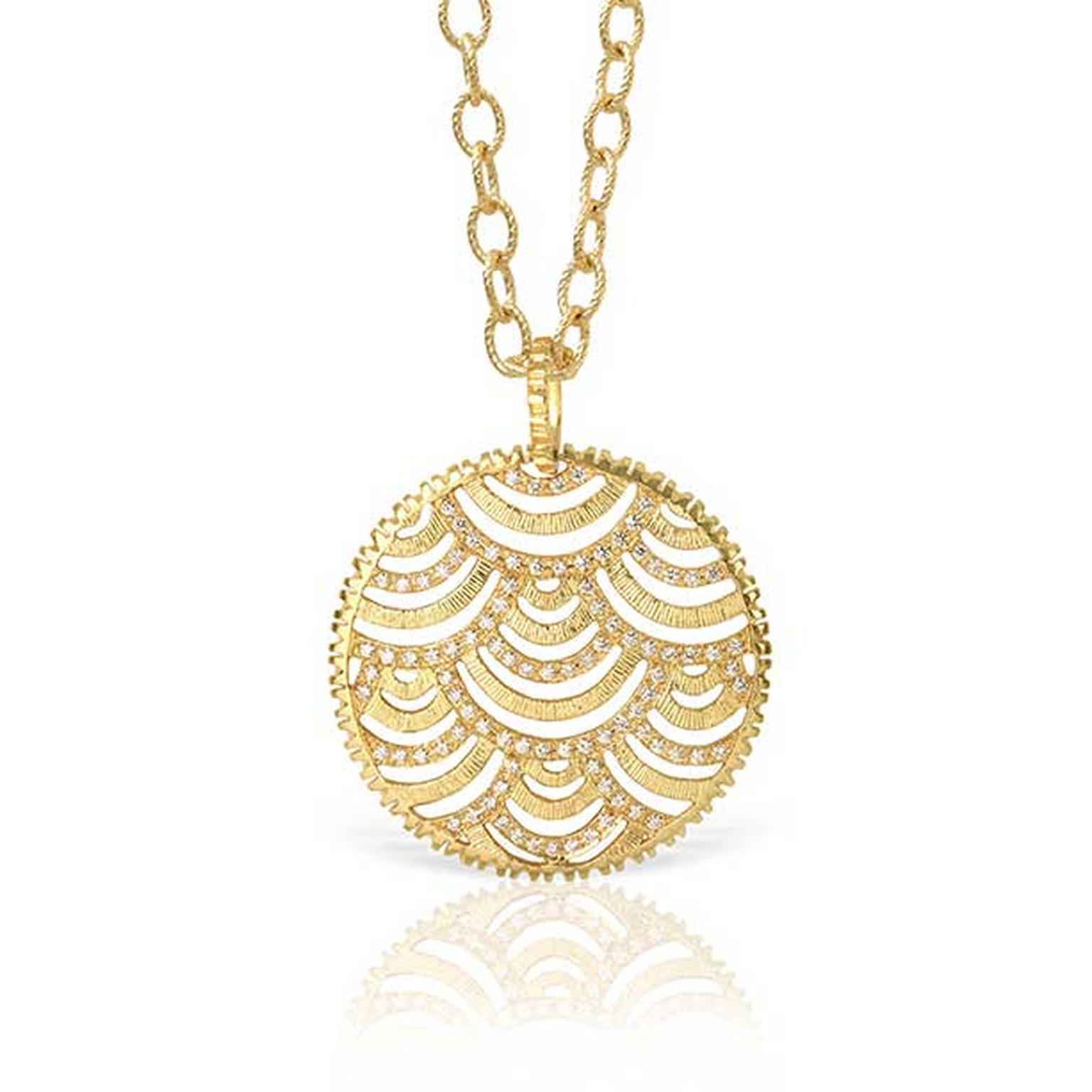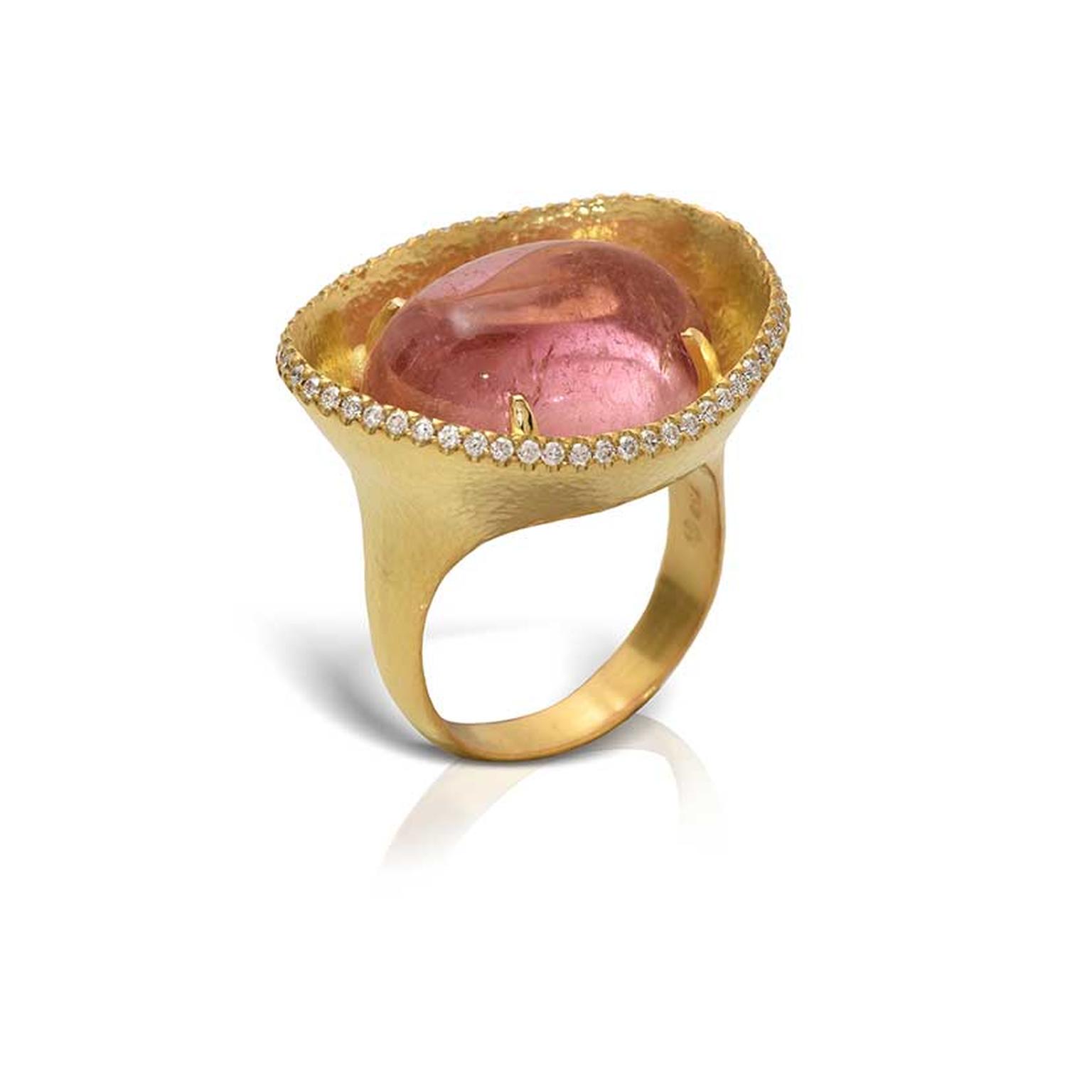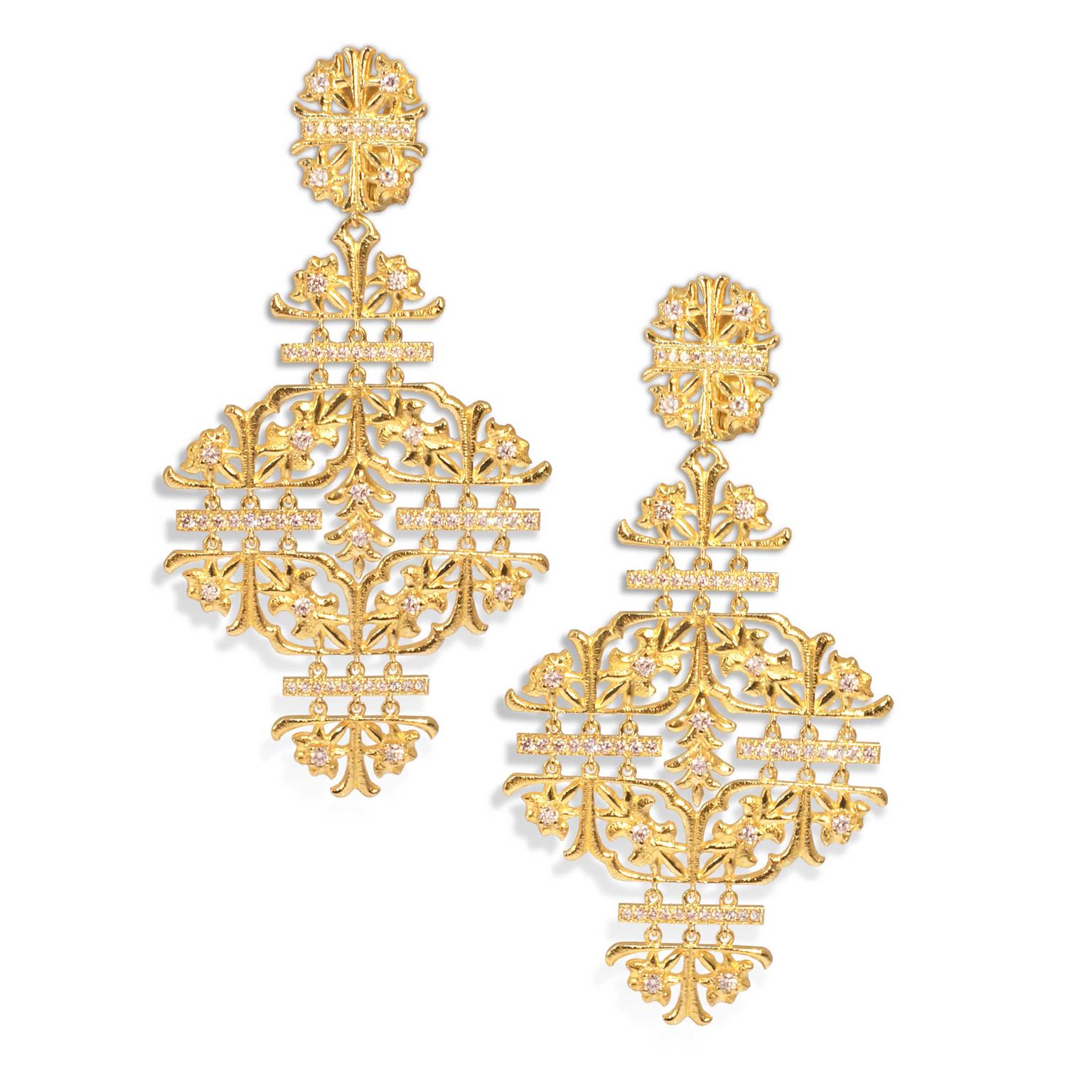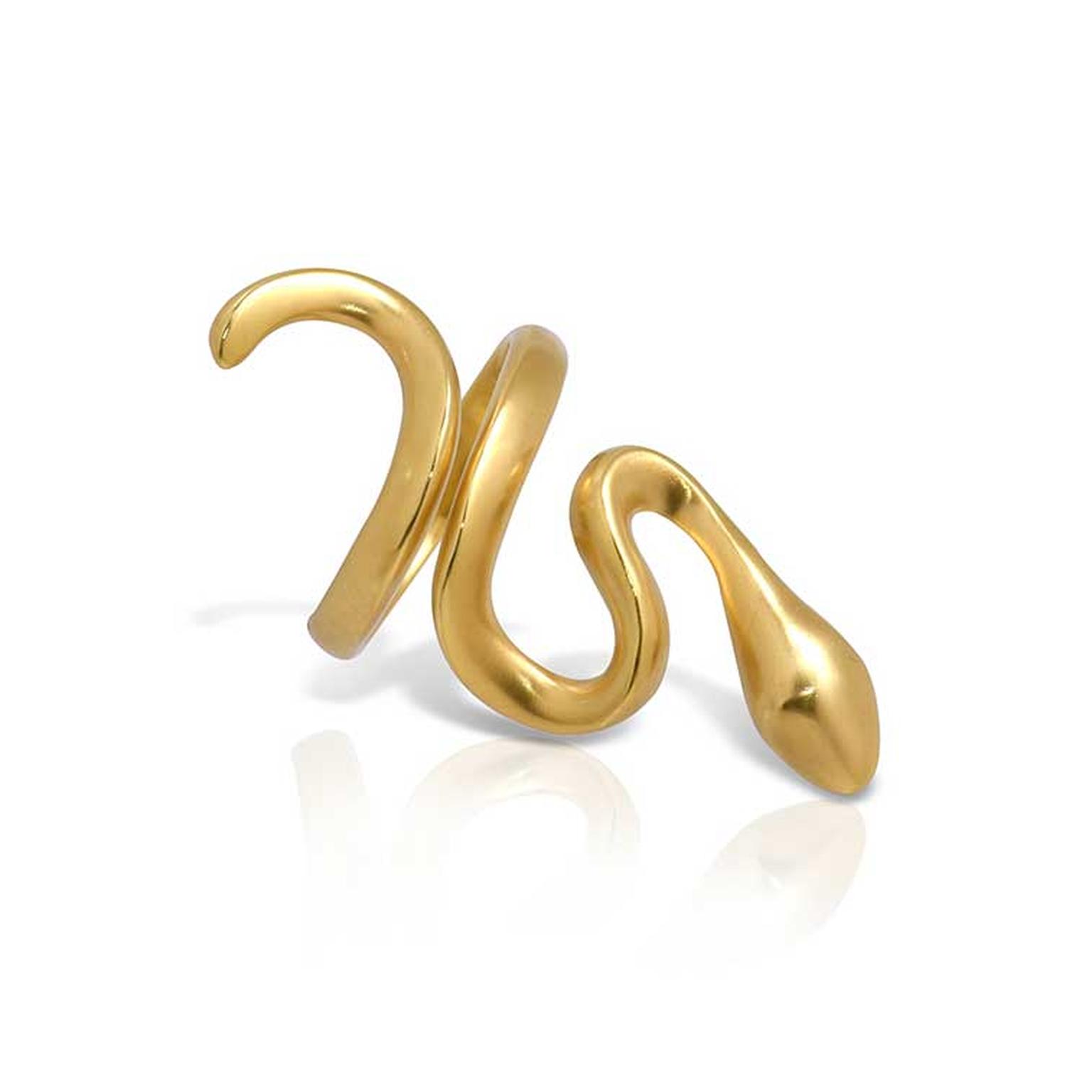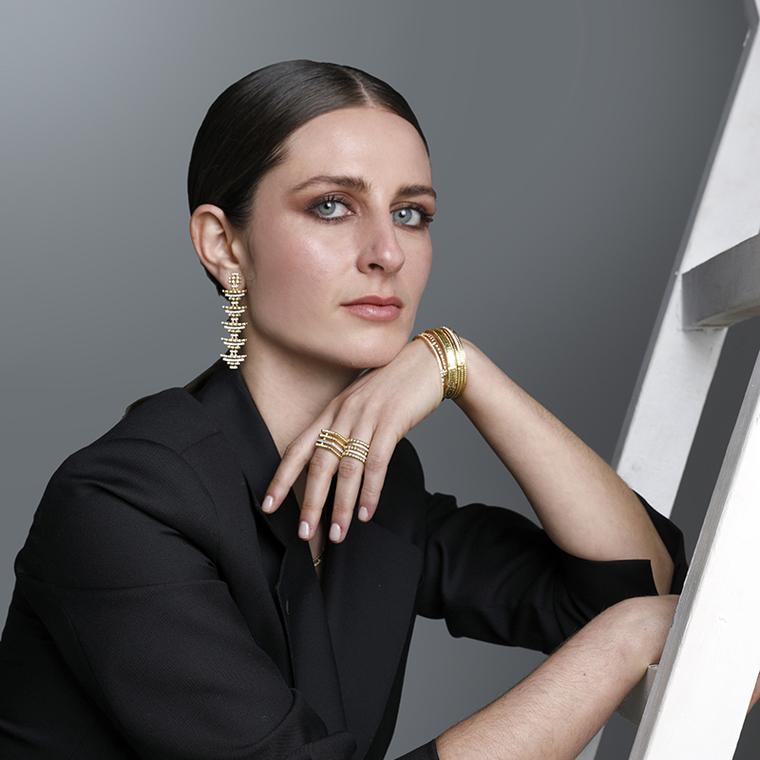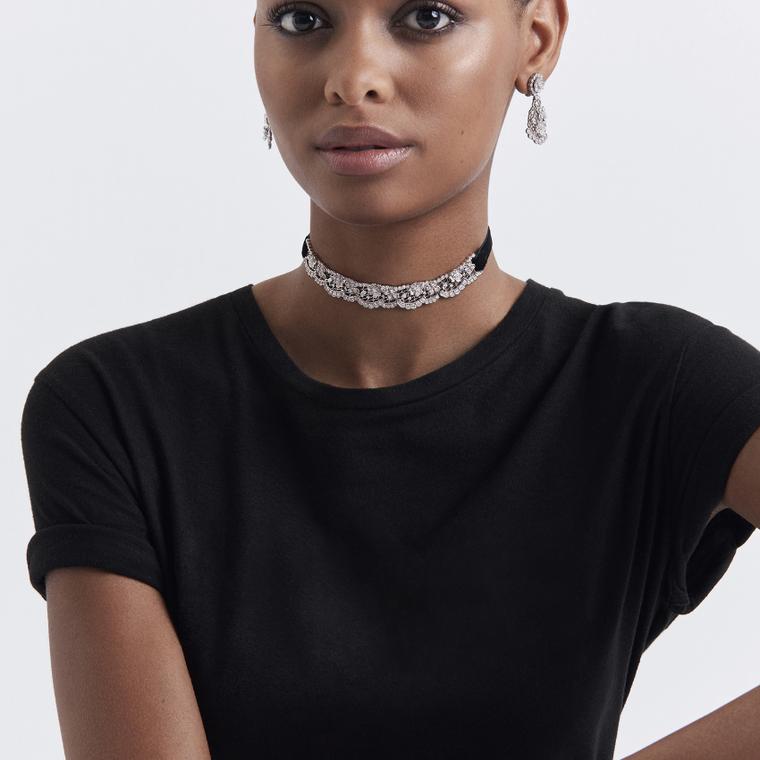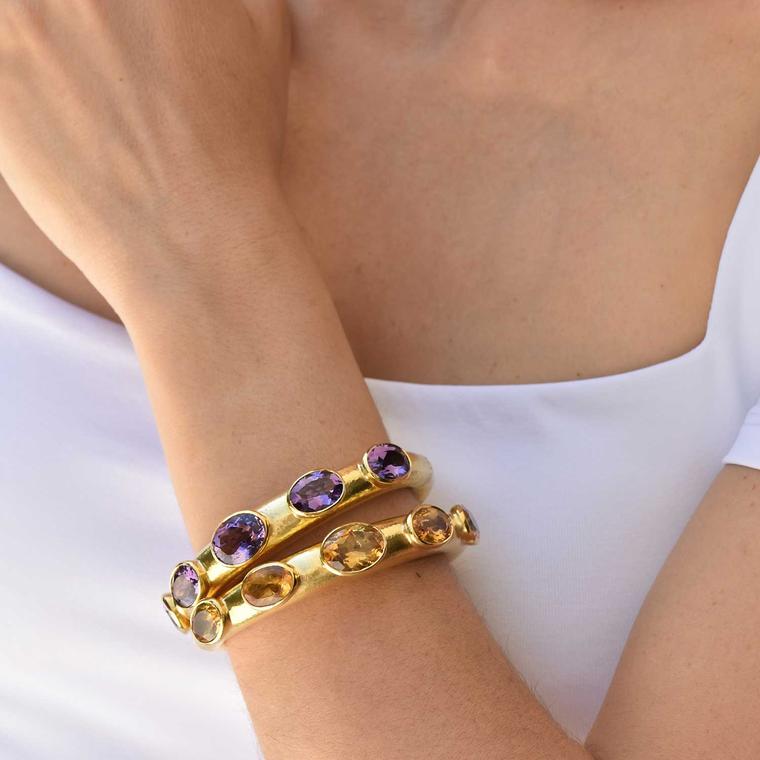The wonders of the world, past and present are a vast source of inspiration for most jewellers and Lalaounis is no exception. Like many others, Maria Lalaounis, design director of the Greek-family owned Lalaounis firm, travels beyond her country to create both figurative and abstract designs inspired by a wide range of themes from art to nature, architecture and the animal kingdom.
But there is much more to Lalaounis’ designs than meets the eye. Unlike other houses, jewellery making techniques play a singularly important role. Demetra Lalaounis Auersperg, co-CEO and director of international operations, explains: ‘As much as we are known for jewels with Greek heritage from eras and cultures such as the Minoan, Mycenaean or Byzantine, we are also very much about techniques. It is both the design and the techniques that define our jewels. For example in a Hellenistic inspired jewel featuring the Hercules knot motif we will employ hand weaving and granulation techniques that were used in that era, whereas a Neolithic torque choker will be made with hand-hammered gold.’
But the ingenuity doesn’t stop there. Lalaounis cross-pollinates and mixes and matches techniques and eras. A Minoan style of gold beads could be made using the gold hammering technique from the earlier Neolithic period. Or a bird typical of the Hellenistic age featuring delicate granulation markings sits atop a contemporary square shank.
So distinctive is this approach of fusing different design styles with a range of manufacturing skills, that it has set Lalaounis apart. So much so, that it is fair to say that Lalaounis has created a style all of its own.
It was not always this way in the workshop when founder Ilias Lalaounis was running the company. ‘This is not what my father would do’ explains Lalaounis Auersperg ‘he was more faithful to the techniques used in each period. Today, as well as telling stories, we also experiment with ways to work with gold and have added the aspect of mixing up techniques and styles. While we may be inspired by a certain era, we can manufacture it in ways not associated with that era. We are always finding ways to make the jewels more interesting for our clients and for us.’
At Lalaounis, a collection never dies but evolves through a constant quest for new design inspiration as well as experimenting with manufacturing methods. Despite these constant re-imaginings each jewel to bear the Lalaounis hallmark is surprisingly easy to identify. All of this is only possible because of Lalaounis’ singular creation process in which the design team works hand in hand with the goldsmiths in its Athens workshops. Reviving and evolving ancient handcrafts contributes as much to the Lalaounis look as do its designs.
Lalaounis Auersperg says: ‘my sister Maria, the creative director, doesn’t create like others who would normally pass a perfect, finished design to the master jeweller. It is a constant collaboration between her and the jewellers. Our relationship is very much hands on, we have an idea, a vision or just a theme and we draw some basic designs but from there we work closely with the jewellers to come up with an initial concept to capture what we want to express. This adds a lot to the piece, as it is a conversation between the design team and the workshop allowing the design to achieve the greatest expression of both the concept and craftsmanship. We also spend a lot of effort checking how comfortable the jewels are on the body and adapt traditionally hard to wear techniques to be more wearable.’
The theory bears out the final results and here are ten Lalaounis jewels that convey the spirit of the firm’s design and production process.
1 Neolithic tool-inspired ring
The sculptural form of this ring has echoes of the Neolithic torque choker but with a modern slant. The back of the gold is hand-hammered, the process most associated with the Neolithic era, to offer a remarkably contemporary look.
The art of hand-weaving gold dates back to the Hellenistic period of Ancient Greece and today the skill is nurtured in creations such as this Hercules Knot necklace. In this laborious process, each link is formed by winding a gold wire around a hand drill that is then soldered to create a circle. Just as in weaving, vertical and horizontal rows of links are joined to create a strong chain that is beautiful on its own or as an element in a more complex creation.
You would be hard pressed to recognise this as a Neolithic-style ring but it is in fact a fusion of the minimalism of the Neolithic era and an exploration of the floral motif in the shape of a gold petal. And there’s more, the production team wanted to see how hammered gold looked when applied inside the cavity containing a cabochon gemstone. The result is a strikingly luminous ring full of movement and subtle plays of light and shade.
These long Minoan Bead earrings elegantly capture the sculptural aspect of the jewels of this époque. The beads are an integral part of Minoan culture and here are rendered in a refined hammering technique of smaller dents associated with Hephaestus, the Greek mythical god of fire. This finish adds depth to the natural lustre of the gold. It is interesting to note that ancient vessels also often display this effect, unintentionally created from centuries of use.
In the 1870’s Heinrich Schliemann broke the news of the discovery of the treasures of Troy including Helen of Troy’s gold diadem and earrings. He took the famous photograph of his wife Sophia wearing the jewels. Following the turmoil of war, for decades the treasure was considered lost. Lacking the originals to guide him, in the late 1980’s Ilias Lalaounis created the Helen of Troy collection based on Schliemann’s booklet about the excavation and the photo of Sophia. When the original jewels surfaced at the Pushkin Museum in Russia in the early 1990’s, it was a great honour for Ilias Lalaounis that his re-creations were exhibited alongside the originals in 1998.
The Byzantine bracelet reflects the style of this era known for its opulent cabochon gemstones and textured gold work. Faithful to the Byzantine style, the rubies are of a deep red tone and echo the rich colours used in mosaics. The influence of mosaics is also seen in the geometric background pattern of the gold on the band of the bracelet. The rubies are bezel set, as was common at the time and combined with brilliant-cut diamonds that weren’t in use until the 19th century. This marriage of techniques and styles creates a harmonious whole with a timeless look.
The decorations on the side of a 5th century Nubian pottery vessel attracted Maria Lalaounis who set herself the challenge of expressing the distinctive crescent pattern in gold. The gold is hand-chased to create the rich texture that mimics the surface of the clay, converting an ancient pattern into a thoroughly modern jewellery range with global influences.
The Square Ring with Bird has clear Hellenistic influences in its choice of animal motif and the use of fine granulation work that is 3,000 years old. In contrast, the square shape of the ring is a modern version of this classic Greek theme as interpreted by Maria Lalaounis. This ring is testament to the Lalaounis’s ethos that design and manufacturing traditions can evolve over time to keep them alive and relevant. Click to watch Instagram reel.
From Lalaounis’ Animal Kingdom, the serpent ring appears in many different styles. The serpent is a recurring subject in jewellery that has transcended through the centuries and Lalaounis is able to recreate its iconic forms in different techniques, giving a specific personality to each rendition. This highly sculptural version is ageless in its simplicity and is created using the lost wax technique that was developed in the 3rd millennium B.C.
10 Aurelia chandelier earrings
The Aurelia collection has links to late Roman and early Byzantine jewellery not just because of the style of the jewels but the technique of opus interrasile. Since as far back as the 3 rd-7th centuries, floral themed jewels created using the opus interrasile technique were popular. To produce this style of work, goldsmiths punch holes into gold to create a light-as-air lace effect. The vogue for large yet light pieces encouraged Maria Lalaounis to use opus interrasile with open lattice work all linked with multiple articulations so the jewels move and shimmer with every breath of the wearer.
__________________________________________________________________
- Click here to watch an Instagram reel about Lalaounis Snake bangles
- Click here to watch an Instagram reel about Lalaounis Egg pendants
- Click here to watch an Instagram reel about Lalaounis Egg bracelet
- Click here to watch an Instagram reel about Lalaounis Egg charms
- Click here to watch an Instagram reel about Lalaounis Bird earrings
- Click here to watch an Instagram reel about Lalaounis jewels
__________________________________________________________________


